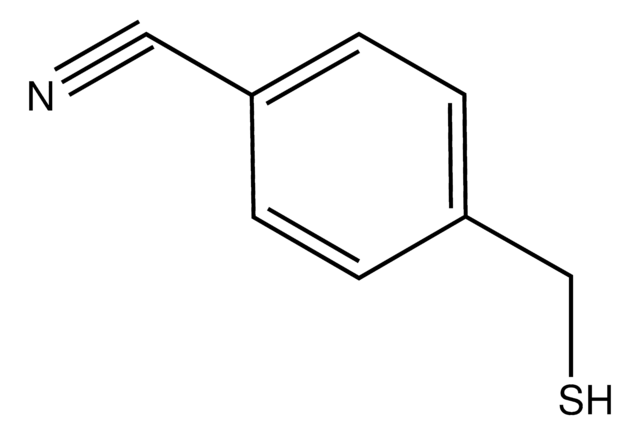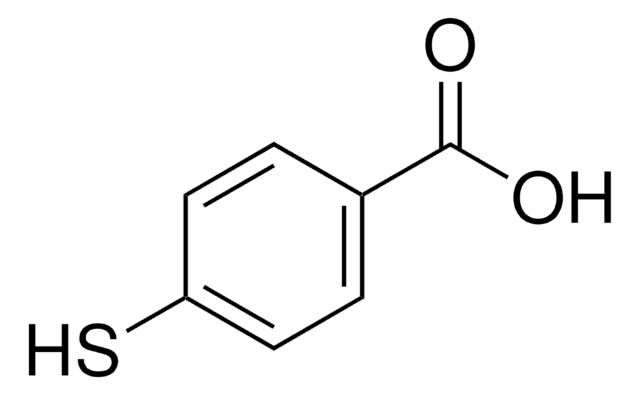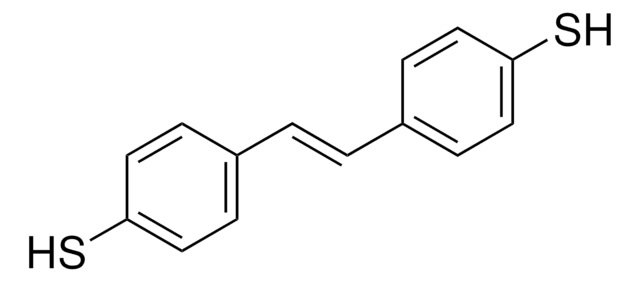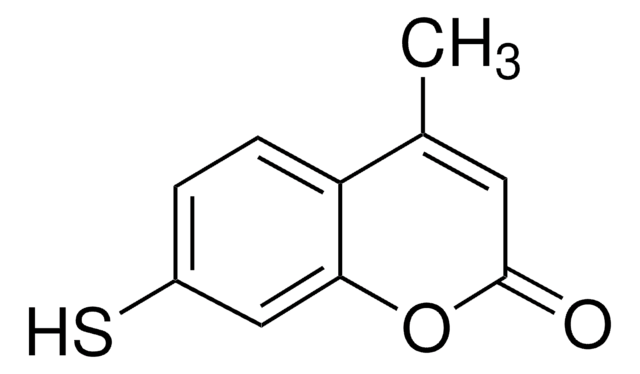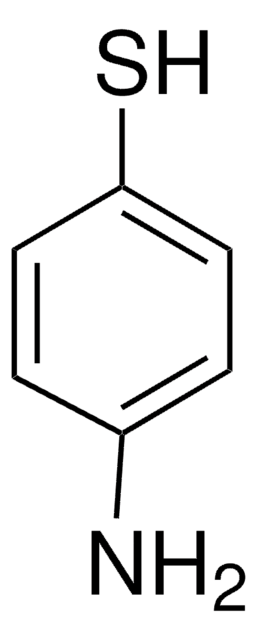760080
4′-Mercaptobiphenylcarbonitrile
97% (GC)
Synonym(s):
4′-Mercapto-[1,1′-biphenyl]-4-carbonitrile
Sign Into View Organizational & Contract Pricing
All Photos(1)
About This Item
Empirical Formula (Hill Notation):
C13H9NS
CAS Number:
Molecular Weight:
211.28
MDL number:
UNSPSC Code:
12352103
PubChem Substance ID:
NACRES:
NA.23
Recommended Products
Quality Level
assay
97% (GC)
form
powder
mp
127-132 °C
SMILES string
Sc1ccc(cc1)-c2ccc(cc2)C#N
InChI
1S/C13H9NS/c14-9-10-1-3-11(4-2-10)12-5-7-13(15)8-6-12/h1-8,15H
InChI key
ZZSHJNKMDIZSFY-UHFFFAOYSA-N
Application
This material is used to tune the electronic properties and subsequent surface coverage of gold surfaces/monolayer.
signalword
Danger
hcodes
Hazard Classifications
Aquatic Acute 1 - Eye Dam. 1
Storage Class
11 - Combustible Solids
wgk_germany
WGK 3
flash_point_f
Not applicable
flash_point_c
Not applicable
Choose from one of the most recent versions:
Certificates of Analysis (COA)
Lot/Batch Number
Don't see the Right Version?
If you require a particular version, you can look up a specific certificate by the Lot or Batch number.
Already Own This Product?
Find documentation for the products that you have recently purchased in the Document Library.
Nikolaus Meyerbröker et al.
Langmuir : the ACS journal of surfaces and colloids, 28(25), 9583-9592 (2012-06-02)
Here we describe the behavior of self-assembled monolayers (SAMs) of 4'-cyanobiphenyl-4-thiol (CBPT) on Au(111) upon electron irradiation. Under such a treatment, the aromatic framework of CBPT SAMs is laterally cross-linked while the nitrile groups, located at the SAM-ambience interface, are
Ferdinand Rissner et al.
ACS nano, 4(11), 6735-6746 (2010-11-05)
The electronic structure of mixed self-assembled monolayers (SAMs) on Au(111) surfaces is modeled using slab-type density-functional theory calculations. The studied molecules have a dipolar character induced by polar and electron donating or accepting tail-group substituents. The resulting electronic structure of
Our team of scientists has experience in all areas of research including Life Science, Material Science, Chemical Synthesis, Chromatography, Analytical and many others.
Contact Technical Service
